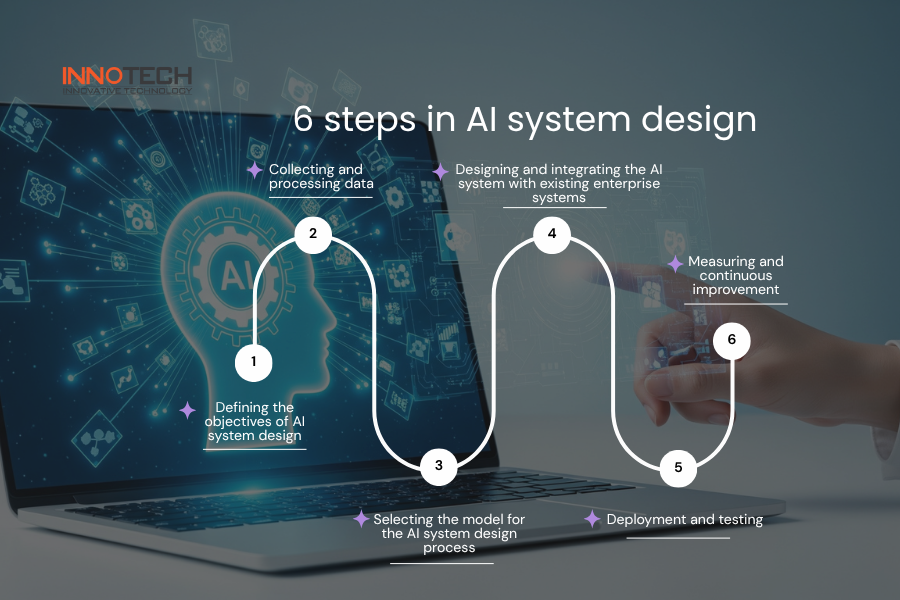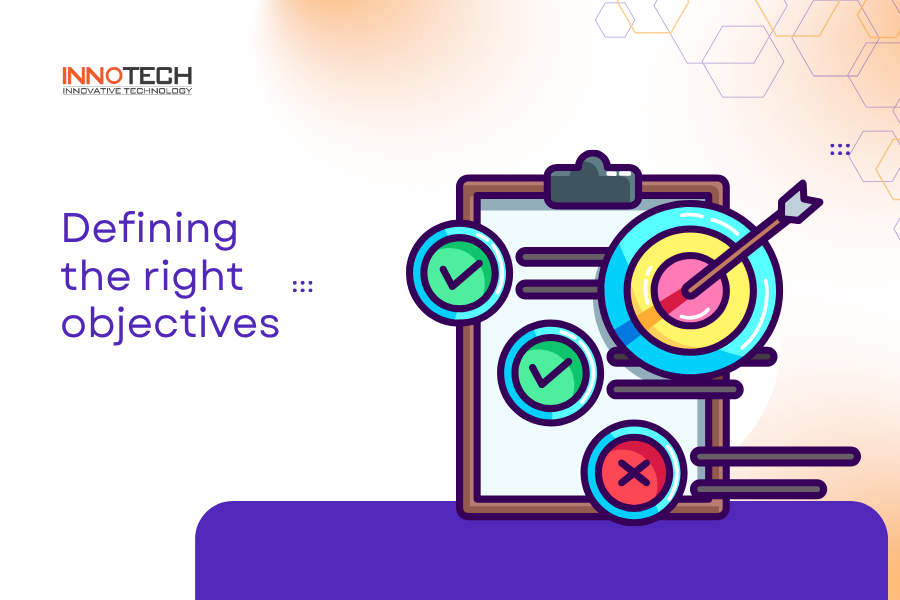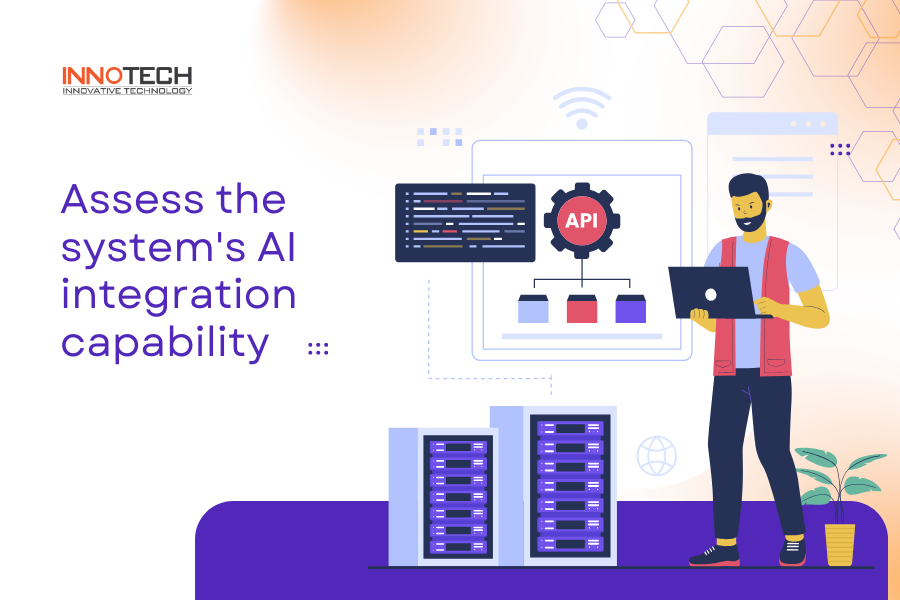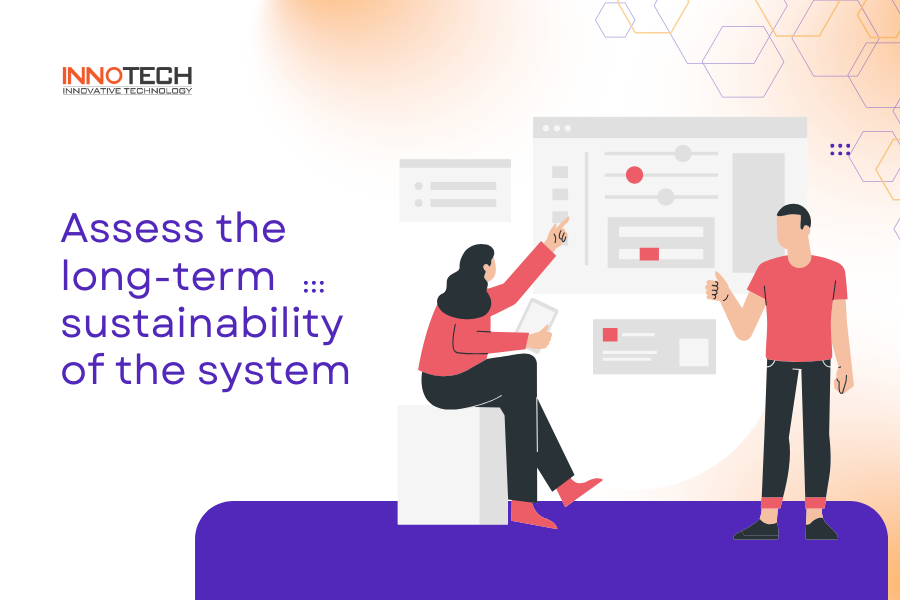Artificial Intelligence (AI) is no longer an unfamiliar concept but has become a core element in the digital transformation strategies of enterprises. From large corporations to small and medium-sized businesses, all recognize AI as a strategic tool that helps enhance competitiveness, optimize operational processes, and drive sustainable growth. Therefore, designing an AI system that can flexibly integrate with existing technological infrastructure is not only a trend but also an urgent requirement if businesses do not want to be left behind in the digital era. The following article introduces six essential steps in the AI system design process, helping businesses effectively implement and harness the potential of this technology in practical operations.
1. The importance of AI system design for business operations
According to Harvard Business Review (2023), up to 85% of business leaders reported feeling stressed and exhausted during the decision-making process. Three-quarters of them stated that the number of decisions they must make daily has increased tenfold in the past three years. After applying AI to analyze and handle problems, their decision-making process became much faster and easier, reducing over 30% of the workload compared to before.

Designing an AI system for enterprise operations is essential.
According to Deloitte Insights (2024), as many as 94% of business leaders believe that an effective AI system design within the enterprise is a key factor in their success strategy for the next five years. Data analysis from more than 4,600 companies shows that those tightly integrating strategy, technology, and transformation capabilities can increase market capitalization value by USD 1.25 trillion, while misalignment may result in losses of up to USD 1.5 trillion. The report affirms that designing an AI-driven operational system not only helps optimize costs, increase efficiency, and scale up but also serves as a foundation for creating sustainable value and long-term competitive advantages for enterprises.
2. Six steps in the AI system design process
In reality, many enterprises have understood the benefits of building and designing a comprehensive AI system and have begun planning to implement this process. However, the an AI system design process is not simple; it requires thorough preparation and deep technological understanding. Therefore, businesses need to study carefully before launching this critical project.

6 steps in AI design system
In general, the AI system design process includes six steps:
Step 1: Define AI system design objectives
Before starting the AI system design process, businesses must clearly define the business objectives that the AI system will serve.
Objectives should be tied to measurable outcomes such as: reducing operational costs by 20%, increasing revenue from existing customers by 15%, or shortening response time to just two seconds. This helps guide the AI system design more effectively.
This requires collaboration between the management team and technical departments to translate business goals into specific technical requirements such as:
- Inventory forecasting systems
- Customer service chatbots
- Credit risk scoring models.
This step forms the foundation for developing a comprehensive AI Agent solution, ensuring that the AI system truly serves the enterprise’s overall business strategy.
Step 2: Data collection and processing
Enterprises must aggregate data from various sources such as transactions, sensors, social networks, CRM, and ERP systems. Then, the data should be cleaned, standardized, and labeled to ensure accuracy when designing the AI system.
Additionally, businesses must establish data quality control standards to eliminate errors, duplicates, or missing information. This provides a foundation for model training, helping to create customized AI models with high accuracy and realistic operational representation.
Step 3: Select the model for the AI system design process
Depending on the set objectives, businesses must choose appropriate AI models and technologies:
- Machine Learning for forecasting, classification, and risk scoring problems…
- Deep Learning for image, voice, and unstructured data recognition…
- Natural Language Processing (NLP) for chatbots and customer sentiment analysis…
- Computer Vision for facial, goods, and behavior recognition…
After that, AI engineers will train the model with real-world data, evaluate performance, and gradually optimize it to achieve the best results.
Step 4: Design the AI system and integrate it with existing enterprise systems
When the model is ready, the next step is to design the overall architecture of the AI system. At this stage, the technical team should design an architecture pipeline including:
-
Data processing: storing and continuously updating collected data in real time
-
Model training: building algorithms based on the model selected in Step 3
-
Deployment and AI service: activating the model and generating responses via API or application
-
Integration with Existing Systems: integrating the AI system with current enterprise IT infrastructure such as ERP, CRM, or Core Banking…
Effective integration ensures that the designed AI system does not operate independently but becomes a seamless part of the enterprise ecosystem, ensuring scalability, security, and performance.
Step 5: Deployment and testing
After completing the AI system design, businesses can deploy it through APIs, containers, or cloud/on-premise platforms. This stage requires comprehensive testing to evaluate system performance, accuracy, response speed, and stability. Businesses can also outsource AI software development services to leverage the expertise of technology partners, ensuring cost-effective and efficient deployment.
Step 6: Measurement and continuous improvement
After deploying the AI system, businesses must establish measurable KPIs such as accuracy rate, cost savings, and processing productivity. They should also monitor for “data drift” or “concept drift” to detect changes in data affecting model performance. Regularly updating and retraining the model helps the AI system become increasingly intelligent. In many cases, collaborating with strategic consulting and AI implementation partners helps enterprises maintain and expand AI capabilities sustainably.
3. Key considerations for effective AI system design
3.1. Selecting a partner with expertise and experience
Choosing the right technology partner plays a decisive role in the success of AI system design projects. Businesses should prioritize collaboration with partners capable of implementation, who understand enterprise operations, and who can develop customized AI models suited to specific business objectives.

Select a partner with expertise and experience
Additionally, the partner should offer AI software development, system integration, and AI system design consulting and implementation services to ensure consistency, flexibility, and long-term scalability.
Partnering with a comprehensive and experienced provider helps businesses minimize risks, optimize costs, and maximize the value of AI technology in practical operations.
Leave your information TẠI ĐÂY to learn more about the AI system design process!
3.2. Defining the right objectives when designing AI systems
Before starting AI system design, businesses must clearly define the goals the system aims to achieve. Objectives must be specific, measurable, and aligned with the overall development strategy. Misaligned objectives may cause the design process to go off track, wasting resources and failing to deliver practical business value.

Defining the right objectives when designing AI system
3.3. Allocating budget before designing AI systems
AI system design requires investments in data infrastructure, technology, human resources, and training. Businesses should develop a detailed budget plan that includes costs for customized AI model development, deployment, maintenance, and periodic upgrades. Additionally, it is important to forecast expenses for technical risks or strategic adjustments to prevent project disruption.

Allocating budget before design AI system
3.4. Ensuring data quality and security
Businesses must ensure that collected data is complete, accurate, non-duplicated, and reflective of real operational conditions. Applying encryption and security standards helps ensure that the AI system operates safely and complies with legal regulations.

Ensuring data quality and security
3.5. Assessing the system’s AI integration capability
Enterprises must thoroughly assess the AI system’s integration capability to avoid process conflicts or operational disruptions. Integration should not be evaluated superficially without considering the full business process. Overlooking AI compatibility with workflows, organizational structure, or internal decision-making models may lead to inefficiencies.

Assessing the system’s AI integration capability
3.6. Assessing the long-term sustainability of the system
After completing the AI system design process, businesses must evaluate the long-term operability of the delivered system. Factors such as scalability, model updates, technical support, and internal training must be ensured. Moreover, a knowledge transfer plan should be in place so that the internal team can independently manage, maintain, and optimize the AI system in the future without complete dependence on external partners.

Assessing the long-term sustainability of the system
We have explored the six steps in the AI system design process to enhance business operational efficiency and the key considerations when implementing such a system. Hopefully, this article provides you with valuable insights. If you have any questions or would like further information, please leave your details below . We will contact you soon!



